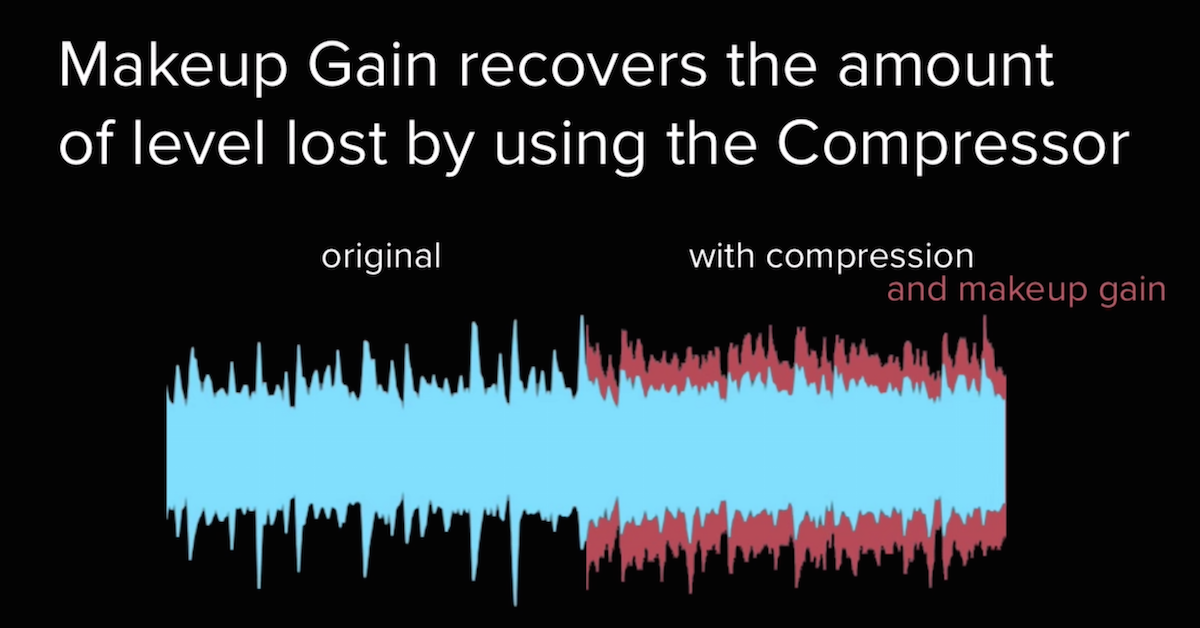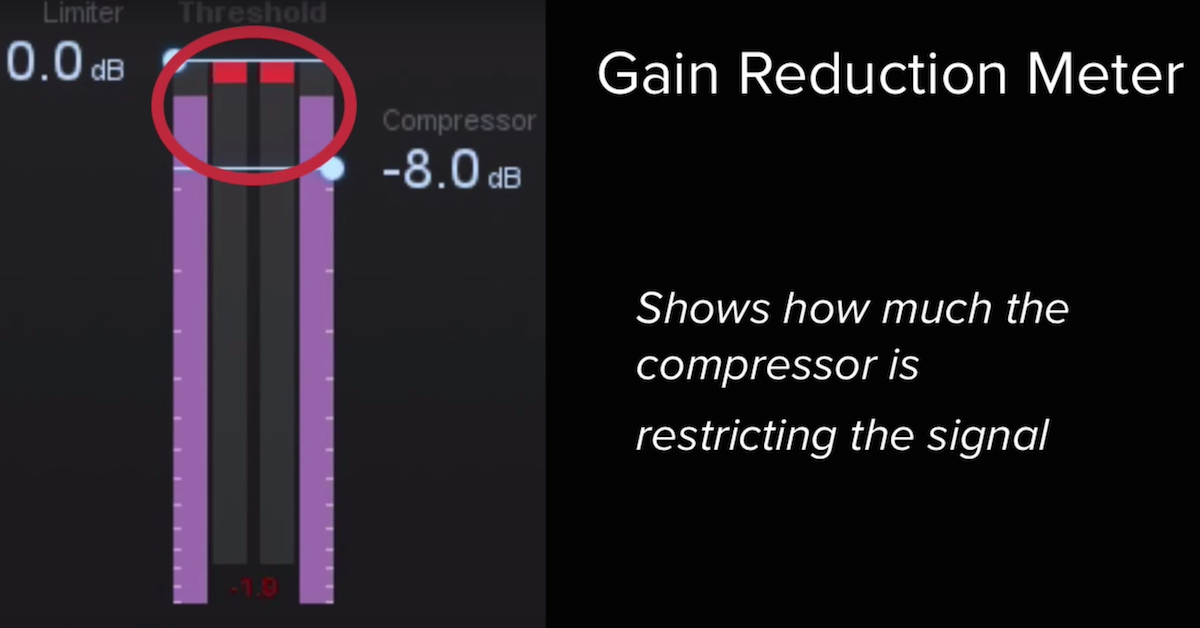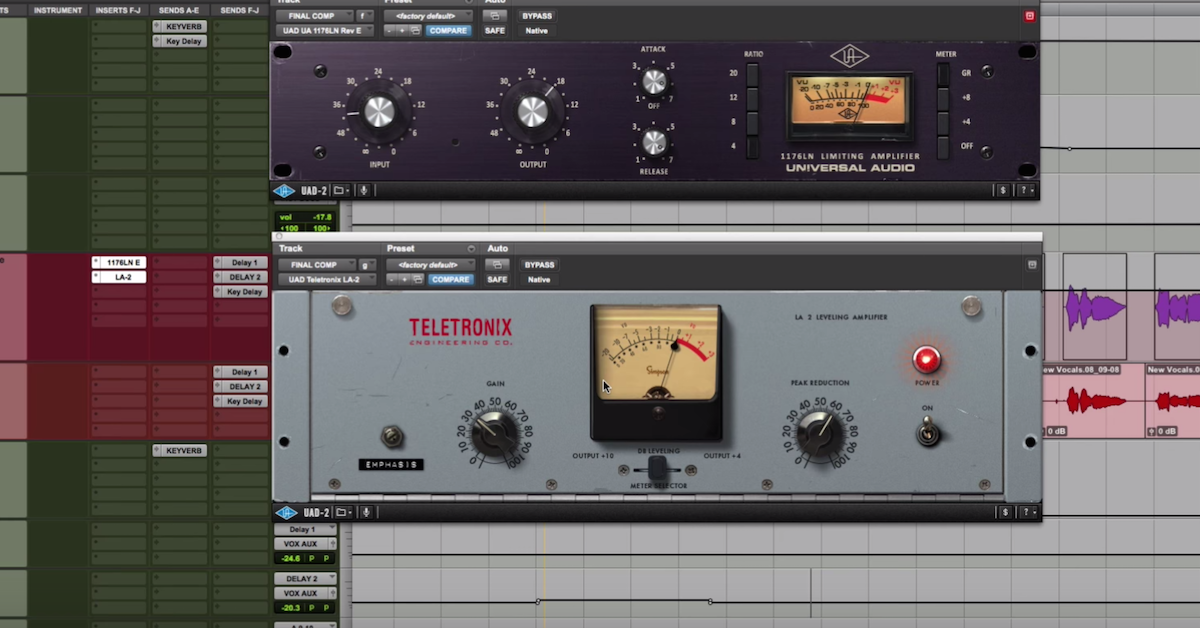4 Types of Compressors Explained (+ Mix Tips)
Article Content
Like any other hardware or software we use to capture and process audio, compressors are tools. At the surface, their function is pretty easy to understand: they lower the level of incoming signal when it crosses a given threshold.
In practice, of course, things get more complicated. Attenuating the volume of incoming signal has some pretty varied potential applications. On a micro-level, we can use compressors to sculpt individual transients, accentuating or flattening the attack of the sounds we feed into them. This action is performed in a fraction of a second. On a macro-level, compression can be used to shape the overall dynamic arc of an individual track or an entire mix, fluidly attenuating the loudest moments and creating a sense of “glue” in a mix.
As you’ve likely observed, not all compressors are created equal. Many excel in particular circumstances but fall flat in others. Almost no compressor is going to be the best choice in all cases, just like no microphone is going to be ideal for all instruments or voices.
Even though, in the era of digital recordings, there are some unique options out there, most of the software compressors we rely on today are either inspired by or overt recreations of venerated studio staples from past decades. Understanding the origins of the tools we use can go a long way to helping us get a handle on why the compressor that makes a vocal pop might also ruin a snare drum and vice versa.
Broadly speaking, we can group hardware compressors and their software counterparts into four categories.
1. Variable-Mu/Tube Compressors
This category of compressors is defined by a couple of crucial features. Most importantly, while many compressor designs incorporate vacuum tubes for color, these compressors rely on tubes for actual gain reduction. The name variable-mu refers to another definitive characteristic of this category of compressor: the gain reduction (“mu”) is highly dependent on source material, with the ratio of reduction fluctuating depending on incoming signal level.
These compressors tend to be capable of fast attack times, but generally offer a slower and often program-dependent release. In practical terms, this means that these compressors are above all else smooth. You can apply lots of gain reduction before hearing the sort of aggressive coloration you might quickly notice with other types of compressors. Other words that get thrown around to describe variable-mu compressors include “thick,” “gluey,” and “warm” (a term that kind of makes my skin crawl).

An original 670 costs more than your car. Even a clone probably costs more than your car.
Iconic Examples
While Manley’s Variable-Mu compressor is the namesake of this category, the venerated Fairchild 670 is undoubtedly the most recognizable variable-mu compressor. The Universal Audio 175/176 are also beloved and frequently-emulated tube compressors worth mentioning here, as is the EMI RS124.
In the Box Faves
UAD’s Fairchild 670 is a great emulation of the sought-after hardware for those of us (most of us) who can’t afford the hefty price tag of an original unit, which in any condition tends to run more than most home producer’s entire setups are worth. The Waves Puigchild is another noteworthy Fairchild emulation.
Kush’s AR-1 is a sweet sounding and very usable emulation of the EMI RS124, heard on the recordings the Beatles made at Abbey Road (Waves makes an emulation as well). Klanghelm’s MJUC may take the cake in terms of “bang for the buck,” offering three excellent, feature-loaded Variable-Mu compressors for a little under $30.

Kush AR-1: great on vocals, great on bass. Useful features + on-point vibe
Mix Tips
Manley’s Vari-Mu is a staple of mastering studios, and many engineers speak highly of both hardware and software versions used conservatively on the 2-buss. The Fairchild and its software counterparts perform similarly well in those applications.
I personally reach for (in the box) tube compressors for piano, especially when I’m looking for a vibey, vintage tone. The Fairchild’s faster time-constant settings (1-3) tend to be most useful in these sorts of applications, clamping down on the initial attack of the note while releasing quick enough to stay rhythmic and musical, resulting in a thick, weighty sound.
Tube compressors also excel on vocals, especially when smoothness is the goal. I love the Kush AR-1 as a vocal compressor, using a moderate attack (10 ms) and medium-slow release timed to the song.
2. Optical Compressors
Optical compressors are, like tube compressors, known for their smooth sound and program-dependent release characteristics. Though the most iconic example of an optical compressor (more on that below) does indeed incorporate a tube into its circuitry, these compressors are their own beast.
In an optical compressor, gain reduction is controlled by a light-sensitive resistor. The particulars of this are perhaps a bit more technical than this article aims to be, so I’ll offer a simplified explanation: incoming signal triggers a light that shines on a resistor. The way the light shines on that resistor (and the resistor itself) will determine the amount of gain reduction, as well as the release time.
Though (if I remember correctly) light moves pretty fast, these compressors tend to be fairly slow, offering moderate attack times (10 ms or so) and multi-stage release times. Typically, an optical compressor will release some gain reduction fairly quickly, with the rest tapering off more slowly. The end result is that these compressors are great for smooth dynamic control, but a poor choice for fine-tuned transient sculpting or any kind of rhythmically-specific compression.
Iconic Examples
The poster child for optical compressors, and a studio staple since its introduction in the early 60s, is the LA-2A. Its simple interface (peak reduction and output gain knobs, a switch for ratio) is an idiot-proof one-way ticket to the vocal compression you’re after. The 2A’s younger sibling, the LA-3A, offers similarly limited controls and faster attack and release times that make it suited to a different set of applications.

Try all you want, this guy is not going to let you screw things up
In the Box Faves
UAD’s emulations of the 2A and 3A are my first pick, but the Waves CLA versions are also excellent. If those aren’t enough options for you, every plugin company under the sun makes emulations of both, and there are some very affordably priced hardware recreations out there too.
Mix Tips
I love using the LA-2A for vocals. I’ll set it to reduce 2 dB or so during tracking. It gives you transparent dynamic control that never feels overdone, while giving the vocalist an extra dose of confidence on the mic. The LA-2A is also high on my list of favorite bass compressors, though not if I need to be precise with attack and release times. I love it on string instruments, pads and any kind of legato source material.
The LA-3A is my go-to choice for any type of rhythm guitar — electric or acoustic. Similarly, I’ll dial in just a couple dB of reduction and then compensate the output gain. More often than not, the amount of volume I get back feels like much more than what I lost. The beauty of these compressors is that if you don’t overdo the gain reduction, the limited controls make it pretty hard to miss with them. Just make sure an opto is really the right tool for the job.
3. FET Compressors
FET compressors get their name from the field-effect transistor (FET) that is responsible for creating gain reduction in the signal passing through. Without getting into nitty-gritty electrical engineering topics, FETs are components that are capable of both amplifying and attenuating signal, and they respond to the entire electrical field rather than simply voltage (as with VCA compressors, explained below).
If there is one thing you take away from this article regarding FET compressors, it is that they are fast. How fast, you ask? The most recognizable FET compressor’s attack times range from 20-800 microseconds (millionths of a second), meaning that even the slowest attack is shorter than one millisecond.
So, like, very, very fast.
What that means in practical terms is that FET compressors will completely own any and all transients you feed into them. Unlike optical and variable-mu compressors, they excel at rhythmically specific compression — squashing the attack of one note and dipping back down before the next with ease.
With that speed, of course, comes some serious coloration. Though you certainly can get FET compressors to behave transparently if you need them to, they aren’t known for their gentleness. On the contrary, FET compressors are audio bullies. They can mercilessly flatten incoming source material and introduce some truly aggressive coloration. And most of the time, that’s exactly why we choose them. These sonic characteristics make FET compressors bad choices for busses and mastering but excellent for heavy-handed compression and “creative abuse.”
Iconic Examples
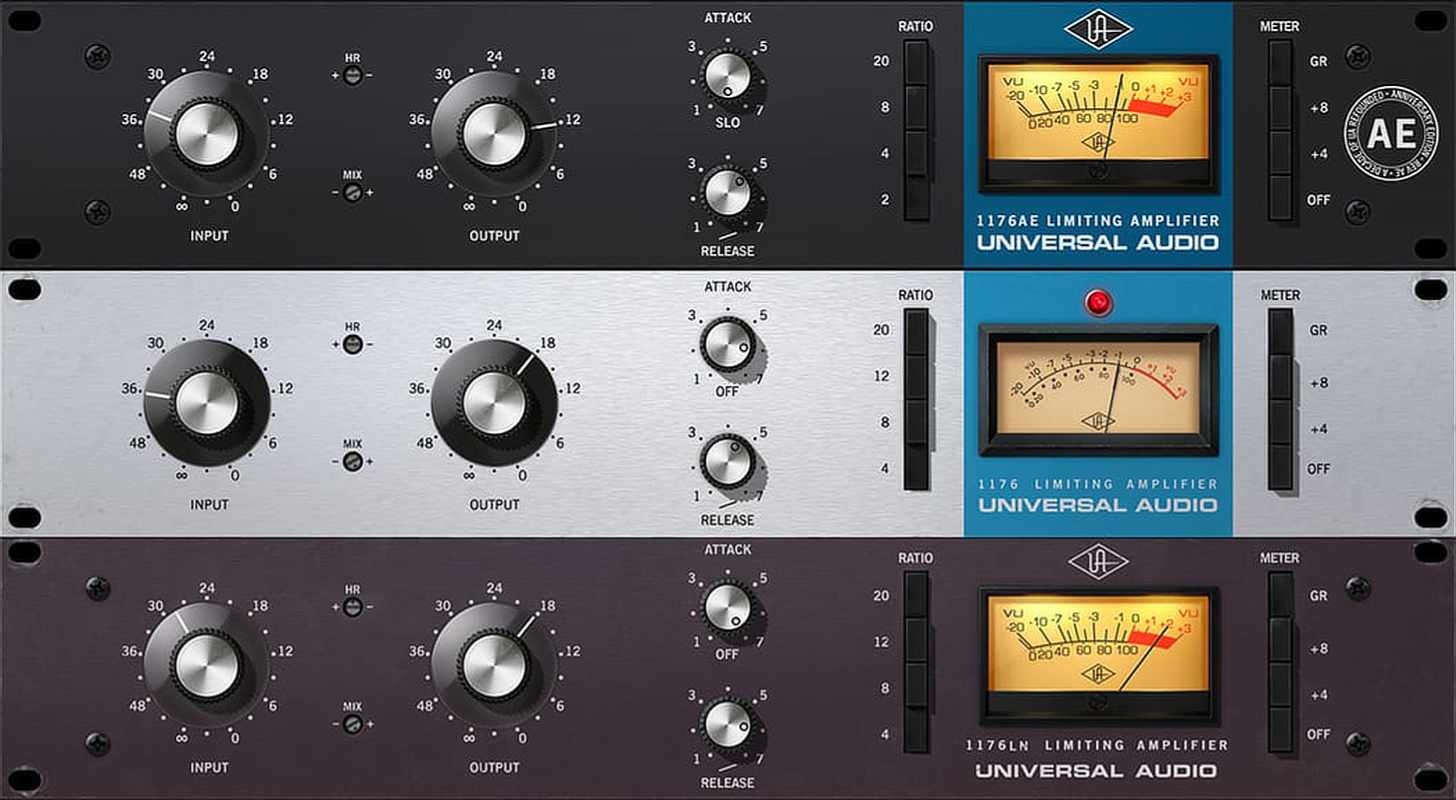
Take a look at these troublemakers
When I was preparing to write this article, I found a few others that referred to the Urei 1176 as “arguably” or “probably” the most iconic FET compressor. What I didn’t see was even a single person arguing that there was another more iconic FET compressor.
Fellow audio writers: why are we equivocating about this? The 1176 is the FET compressor (hot take!). It is the standard by which others are judged. If you go shopping for FET compressors online, you’ll find three emulations of the 1176 for every one non-1176 FET compressor.
In the Box Faves
Like the LA-2A, just about everybody making software compressors has taken a stab at the 1176 too. The Waves CLA and UAD versions are again the standouts, but there have been other worthwhile entries into this crowded field more recently. There are also some credible hardware recreations that cost scarcely more than their software counterparts. What a time to be alive!
Mix Tips
It’s hard to mention the 1176 without talking about its infamous “all buttons in” setting, AKA “British mode.” This definitive setting is also available on any emulation worth its salt, and maybe even a few that aren’t. A common application of “British mode” is on any drum mic (or parallel buss) that you intend to “crush.” Room mics are a common choice for this, but I’ve had great results applying the 1176 all-in crush treatment to wurst (or knee) mics as well as front-of-kit placements. I usually end up liking around 5-7 dB of reduction in these cases, but many go for more and I wouldn’t try to stop them.
Many producers swear by a combination of the LA-2A and 1176 on vocals, with the former providing smooth dynamic control and the latter bringing some tasteful vibey excitement. I’m a big fan of the 1176’s higher ratios (12:1 and 20:1) for lead electric guitar and other melodic instruments.
Quick pro tip: the uninitiated often miss that the 76’s attack and release controls are opposite what you’d expect, with the fastest values (the shortest times) living farthest to the right.
4. VCA Compressors
Last but certainly not least is perhaps the most common (and broadest) category: VCA compressors. VCA stands for “voltage controlled amplifier,” and VCA compressors are the subject of some debate — as other categories of compressors (notably FET compressors) could be said to incorporate VCAs into their design.
Strict-definition VCA compressors, however, differ in that their VCA is contained in an integrated circuit that allows for finely tuned control over the behavior of the compressor in a way that is difficult to achieve with other compressor types. In theory, this makes them able to handle lots of gain reduction without introducing unwanted artifacts. In reality, some of the most beloved VCA compressors are known for some pretty extreme coloration.
As a general rule, VCA compressors tend to be the most functional for precision dynamic control and transient sculpting. They are commonly used in mastering and as buss compressors, and are capable of both squashing and accentuating transients due to their wide range of attack and release times.
Iconic Examples
It’s a little trickier to identify one single VCA compressor as definitive of its category. To make things nice and confusing, I’ll offer you three venerated VCA compressors that are about as different from each other as compressors can be.
The SSL G-series buss compressor is an iconic VCA compressor with flexible controls and a reputation for transparently bringing that “certain something” to a drum buss or an entire mix.
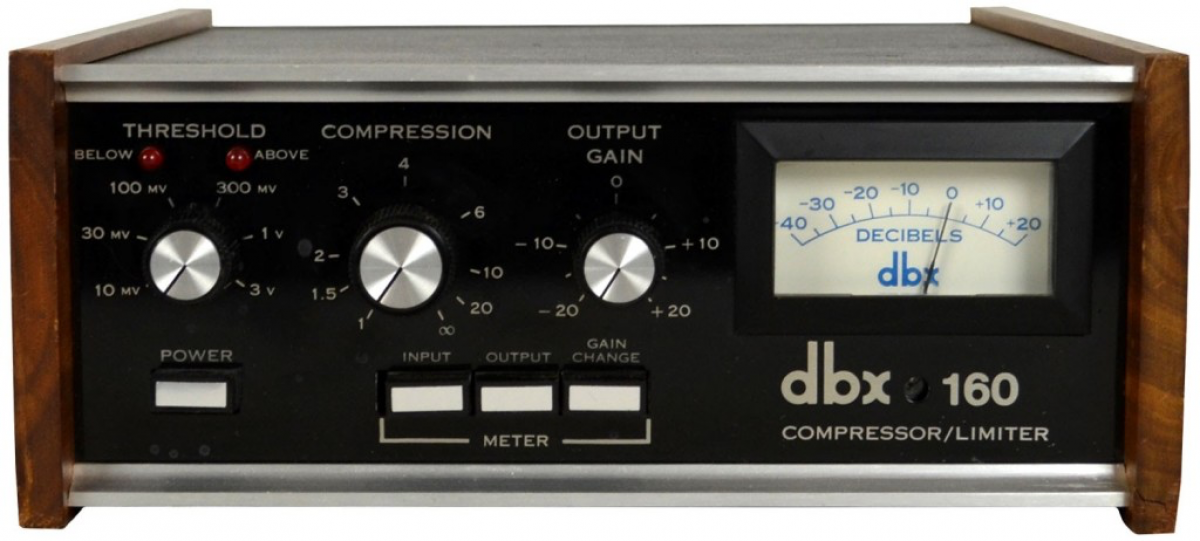
Love the wood paneling, would have appreciated some shag carpet
The dbx 160 is another studio staple, but with no attack or release controls. It is anything but transparent and I would never let it anywhere near my mix buss.
The Empirical Labs Distressor is a “modern classic” that you are likely to find in both commercial studios and bedroom setups. It has infinitely tweakable controls, features an opto compressor emulation setting, and is known for doing a dead-on impression of an 1176 in “all-in” mode.

Blessed 2 b Distressed
In the Box Faves
All three of the compressors I just listed have been emulated to great effect by numerous companies. The usual suspects all offer definitive software reproductions of the SSL G and the dbx 160.
The Distressor has been capably digitized by UAD, and by its own creator, Empirical Labs (the Arousor). My current favorite is Sly-Fi’s Deflector. None of these really do much to trick out the original design (besides the addition of a mix control), nor do I see any reason they should need to.
Mix Tips
With a talent pool as varied as the three favorites I just listed (not to mention the ones I didn’t), it’s a bit tough to narrow down one distinct category of ideal uses for VCA compressors.
The Distressor is a real desert island compressor. If you’re looking for one piece to handle every compression task in your studio, it would be a prime contender. Dial in transparent vocal compression, fine tuned transient sculpting on drum close mics or brutal room mic destruction — and then add one of two flavors of tasteful harmonic distortion as a garnish.
The dbx 160 has a tendency to deliver just the right kind of compression for snare drums and claps. I’d give you details on how to do it, but it literally only has ratio and makeup gain controls. I think you’ll figure it out just fine on your own. I also like the dbx anywhere I want to make percussive source material excited and ugly. You’ll get snap and pleasant saturation for days from just about any application of the 160.
The SSL G series buss compressor is no one trick pony, but try throwing it on a buss with the attack at 30 ms and the release at 100. Dial in a couple dB of compression at a modest ratio for an instant, idiot-proof “betterizer.”
Dark Horse Plugin Honorable Mention
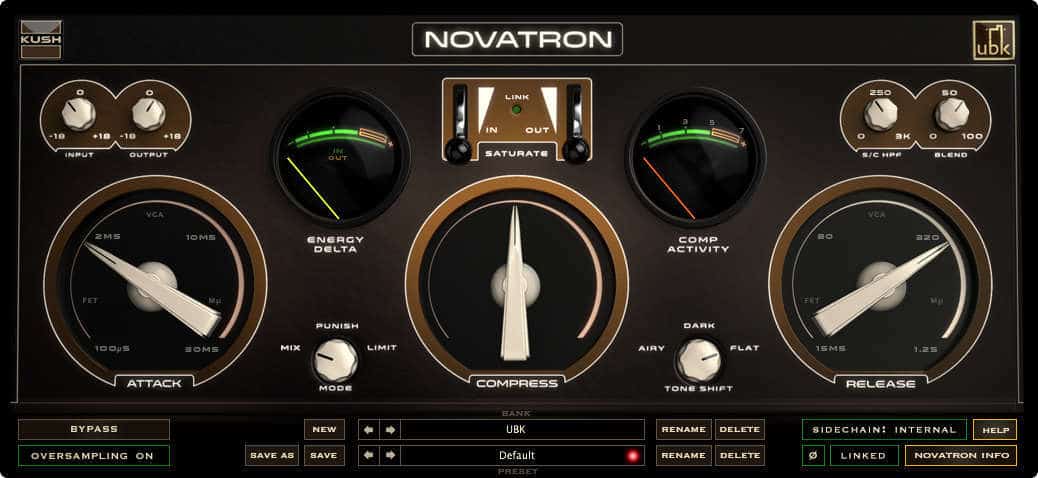
Emulations of whatever it is you’re into, fun for the whole family
Truth be told, I use Kush’s Novatron compressor as much as just about any compressor on this list. It’s a very analog sounding plugin with a very digital execution — combining the attack and release characteristics of various hardware studio staples into one super versatile package. You can dial in the aggressive attack characteristics of an 1176 with the fluid release of a Fairchild. I couldn’t easily include it in any one category, but I use it too often not to include it somewhere, so here it goes in the caboose of the article.
Conclusion
Not having the right tools for the job can be a real drag. Like trying to tighten a flathead screw with a Phillips screwdriver, the wrong kind of compression can potentially ruin a project. Fortunately, we have more options at our disposal and more resources to help us understand them than ever before. Go get squashin’!




